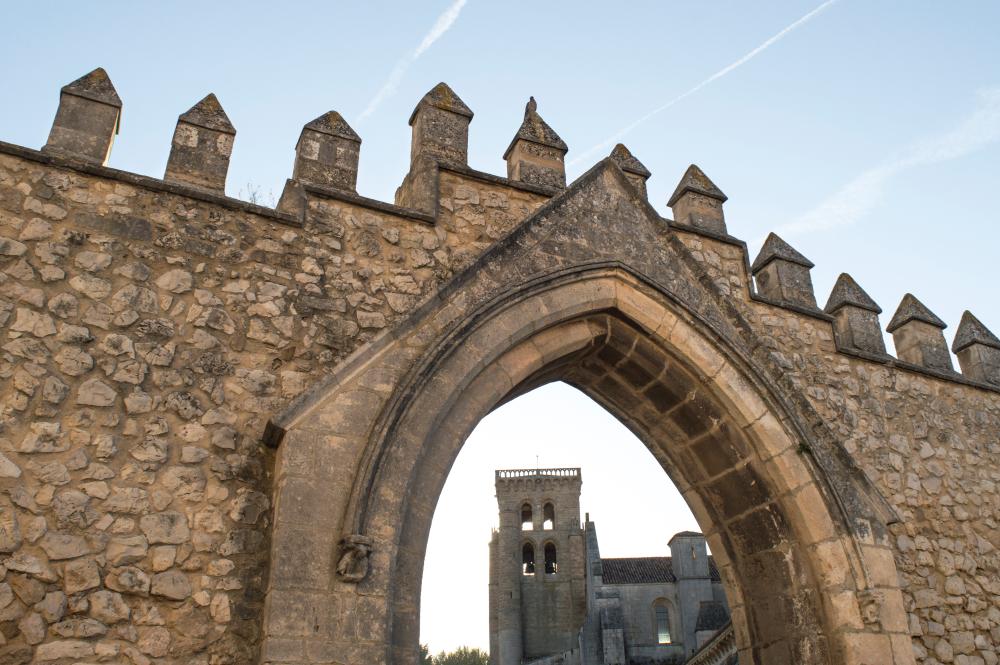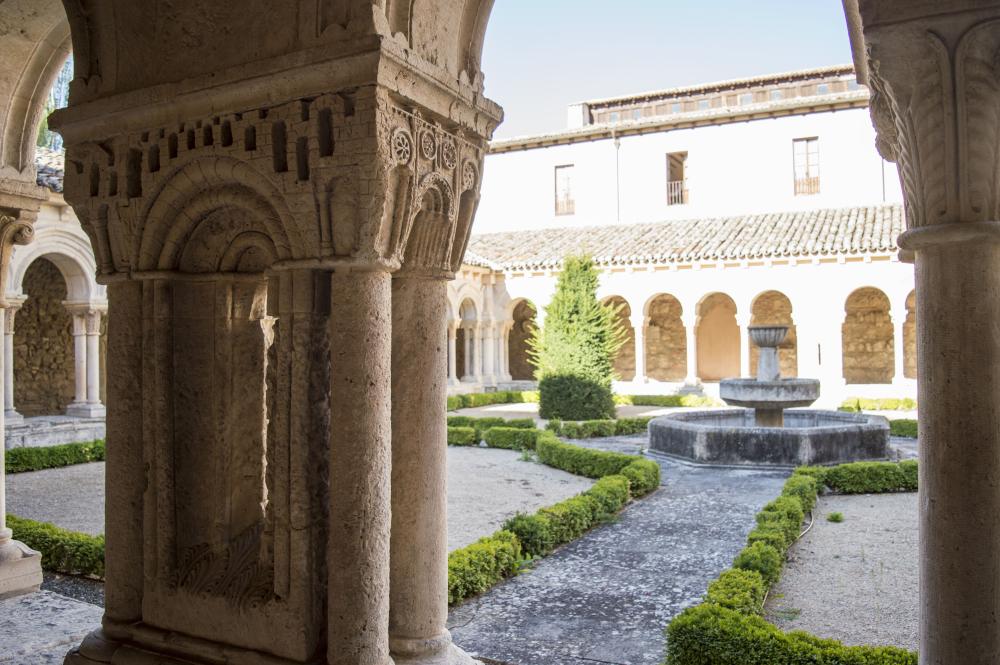The main architecture of the monastery is Cistertercian style, but it also takes elements from different artistic styles such as the beautiful Romanesque cloister known as ‘las Claustrillas’ or the Mudejar chapel of Santiago. It also hosts a unique collection of fabrics that are displayed in the Museo de Ricas Telas (Museum of Rich Fabric), coming from the sepulchres of the monastery and magnificently displayed in what would have been the old granary. Also, in this museum you can admire the banner of Navas de Tolosa, an important battle in the Reconquest that took place in 1212. The banner takes part in a procession during the «Curpillos» festivity.
It is definitely worth visiting this unique monastery and taking a walk around the neighbourhood that surrounds it to enjoy its peaceful medieval atmosphere. Although it is a little far from the historic quarter, it can be easily reached by foot.
All visits are guided and last approximately one hour, but only in Spanish (the ticket includes a guided visit, but it’s only available in Spanish).
Did you know… Although traditionally the name of the monastery has been linked to the verb ‘holgar’ (resting place), it seems more likely that etymologically it comes from the term ‘olca’ or ‘olga’ which, in the Middle Ages, referred land which was uncultivated and dedicated to livestock pasture.




